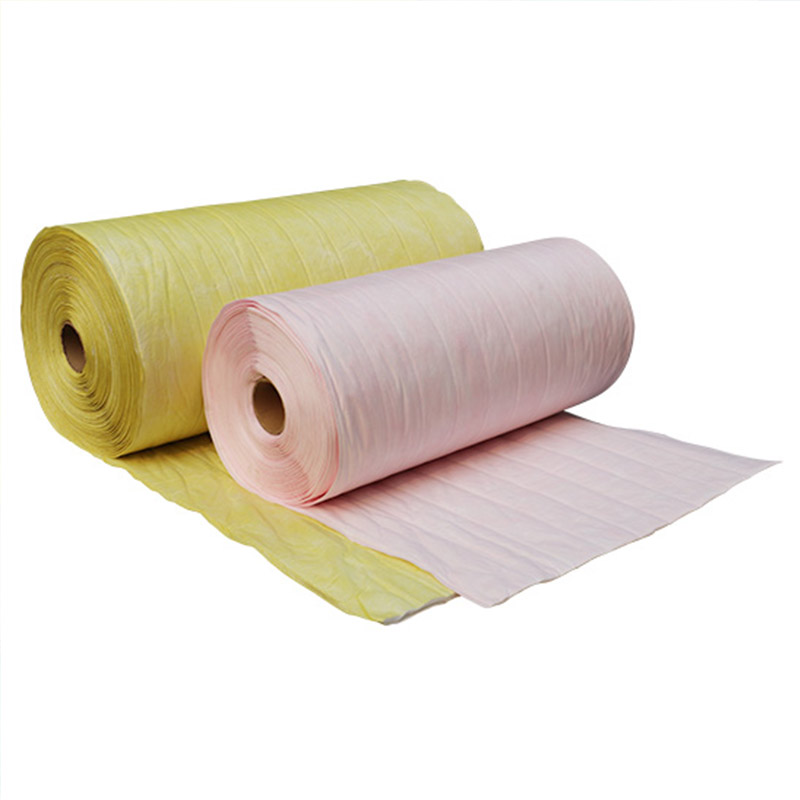Why Non Woven cotton Is Ideal for Air Filtration Systems
Exploring the Growing Role of Cotton-Based Nonwoven Fabrics in Clean Air Technology
As the demand for cleaner indoor air rises in both residential and industrial environments, manufacturers are turning to more sustainable and effective filtration media. Among the many choices available, Non Woven cotton has emerged as a top-performing and environmentally friendly option. This natural fiber-based material combines filtration efficiency with biodegradability, making it ideal for modern air filtration systems.

Natural Composition, Exceptional Performance
Non woven cotton fabric is made from 100% cotton fibers that are processed using nonwoven technology such as airlaid, spunlace, or needle punching. Unlike synthetic filters, cotton-based nonwovens offer superior breathability and moisture absorption while maintaining high particulate filtration capabilities.
Thanks to advancements in cotton spunlace nonwoven fabric technology, manufacturers can now create soft, durable, and uniform filter media that traps fine dust, allergens, pollen, and even PM2.5 particles. The structure of spunlace cotton ensures an optimal balance between airflow resistance and particle capture, making it suitable for HVAC systems, HEPA Filters, and cabin air filters.
Sustainable Filtration Starts with Cotton
In an era where sustainability matters more than ever, cotton nonwoven fabric brings a valuable advantage: biodegradability. Unlike plastic-based synthetic filters that linger in landfills for centuries, cotton-based filters decompose naturally, contributing to environmental conservation goals. This is particularly important in industries seeking to reduce their carbon footprint without sacrificing performance.
Moreover, woven fusible interlining—typically used in garment construction—has inspired hybrid applications where fusible nonwoven layers are laminated with non woven cotton to enhance mechanical strength and structural stability in multilayer air filters.
Versatility Across Applications
Non woven cotton is widely used in a variety of air filtration systems, including:
Residential HVAC units: Reduces airborne dust and allergens.
Commercial buildings: Enhances indoor air quality in high-traffic environments.
Automotive air filters: Keeps cabin air clean from outside pollutants.
Air purifiers: Provides a natural and chemical-free filtering option.
Industrial ventilation systems: Filters oil mist, fine dust, and chemical vapors when combined with additional layers.
One emerging material in this field is stitch bonded non woven fabric, which adds mechanical reinforcement to nonwoven cotton structures. This bonding method creates a highly durable and reusable filter media ideal for environments with high airflow velocity or mechanical vibration.
Customization and Innovation
Cotton-based filtration media can be customized to meet specific filtration standards. Whether it's stitch bonded non woven fabric for enhanced tensile strength or cotton spunlace nonwoven fabric for superior softness and uniformity, manufacturers can tailor the fiber density, thickness, and porosity to match any filtration grade—from coarse to ultra-fine particle capture.
Additionally, treated non woven cotton fabric with antimicrobial agents or activated carbon can offer added protection against bacteria, odors, and volatile organic compounds (VOCs), making it a multifunctional solution for smart air purification systems.
Meeting Global Standards
The performance of non woven cotton in air filters is not just anecdotal. Many cotton-based filter media meet or exceed global filtration efficiency benchmarks such as:
BFE (Bacterial Filtration Efficiency)
PFE (Particle Filtration Efficiency)
MERV Ratings (Minimum Efficiency Reporting Value)
These certifications assure buyers that cotton nonwoven fabrics perform on par with their synthetic counterparts—while offering a natural and safer alternative.
Conclusion
As global industries and households continue to prioritize clean air, the materials used in air filtration systems are under increased scrutiny. Non woven cotton, enhanced by innovations like cotton spunlace nonwoven fabric and stitch bonded non woven fabric, represents a breakthrough in balancing sustainability with performance.
Whether you're a filter manufacturer, HVAC engineer, or industrial buyer looking for eco-friendly alternatives, the time to embrace non woven cotton fabric is now. This natural solution not only cleans the air—but also supports a cleaner planet.





